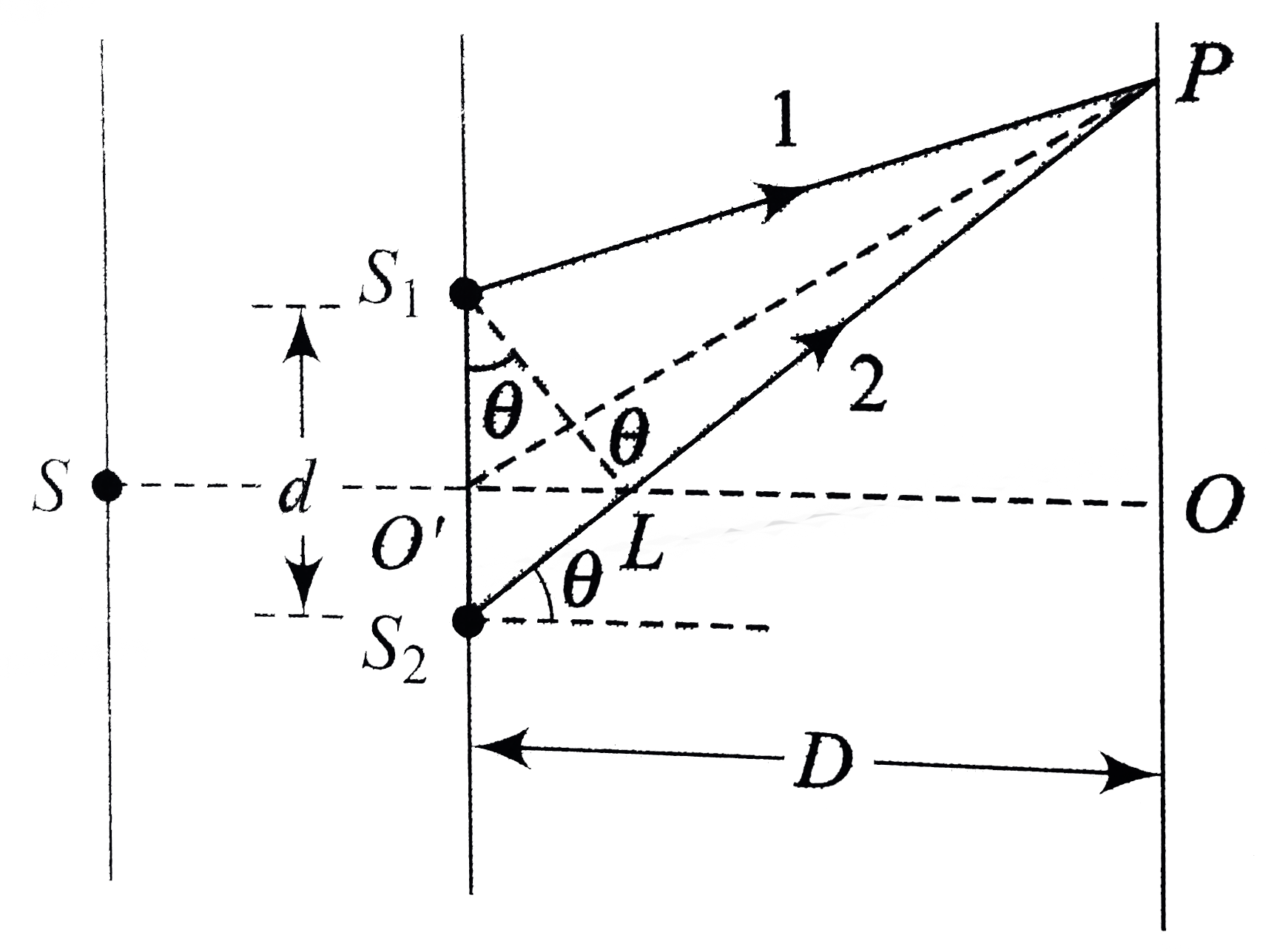Young's interference experiment is performed with monochromatic light. The separation between the slits is 0.500 mm, and the interference pattern on a screen 3.30 m away shows the first side maximum 3.40 mm form the center of the pattern. What is the wavelength ?
To solve the problem, we will use the formula for the position of the interference maxima in Young's double-slit experiment:
Yn=n⋅D⋅λd
Where:
- Yn = position of the nth maximum from the center (in meters)
- n = order of the maximum (1 for the first side maximum)
- D = distance from the slits to the screen (in meters)
- λ = wavelength of the light (in meters)
- d = separation between the slits (in meters)
Step 1: Identify the given values
- Separation between the slits, d=0.500mm=0.500×10−3m
- Distance to the screen, D=3.30m
- Position of the first side maximum, Y1=3.40mm=3.40×10−3m
- Order of the maximum, n=1
Step 2: Substitute the values into the formula
Using the formula for the first maximum:
Y1=n⋅D⋅λd
Substituting the known values:
3.40×10−3=1⋅3.30⋅λ0.500×10−3
Step 3: Rearrange the equation to solve for λ
Rearranging the equation gives:
λ=Y1⋅dn⋅D
Substituting the values:
λ=3.40×10−3⋅0.500×10−31⋅3.30
Step 4: Calculate λ
Calculating the numerator:
3.40×0.500=1.70
Now substituting back into the equation:
λ=1.70×10−63.30
Calculating the final value:
λ≈5.1515×10−7m
Step 5: Convert to Angstroms
To convert meters to Angstroms (1 m = 1010 Å):
λ≈5.1515×10−7m×1010Å/m
λ≈5151.5Å
Final Answer
The wavelength of the light used is approximately 5151 Å.
---
- Yn = position of the nth maximum from the center (in meters)
- n = order of the maximum (1 for the first side maximum)
- D = distance from the slits to the screen (in meters)
- λ = wavelength of the light (in meters)
- d = separation between the slits (in meters)
- Separation between the slits, d=0.500mm=0.500×10−3m
- Distance to the screen, D=3.30m
- Position of the first side maximum, Y1=3.40mm=3.40×10−3m
- Order of the maximum, n=1
Using the formula for the first maximum:
Rearranging the equation gives:
Calculating the numerator:
To convert meters to Angstroms (1 m = 1010 Å):
The wavelength of the light used is approximately 5151 Å.
Topper's Solved these Questions
- BOOK - CENGAGE PHYSICS ENGLISHCHAPTER - WAVE OPTICSEXERCISE - Subjective11videos
WAVE OPTICS
- BOOK - CENGAGE PHYSICS ENGLISHCHAPTER - WAVE OPTICSEXERCISE - Single Correct128videos
WAVE OPTICS
- BOOK - CENGAGE PHYSICS ENGLISHCHAPTER - WAVE OPTICSEXERCISE - Exercise 2.112videos
WAVE OPTICS
- BOOK - CENGAGE PHYSICS ENGLISHCHAPTER - SOURCES OF MAGNETIC FIELDEXERCISE - single correct Ansewer type12videos
SOURCES OF MAGNETIC FIELD
Similar Questions
A source emitting light of wavelengths 480 nm and 600 nm is used in a double slit interference experiment. The separation between the slits is 0.25 mm and the interference is observed on a screen placed at 150 cm from the slits. Find the linear separation between the first maximum (next to the central maximum) corresponding to the two wavelengths.
View SolutionYoung’s double slit experiment is performed with light of wavelength 550 nm . The separation between the slits is 1.10mm and screen is placed at distance of 1 m . What is the distance between the consecutive bright or dark fringes
View SolutionYoung's double-slit experiment is performed with a 600 nm light and a distance of 2.00 m between the slits and the screen. The tenth interference minimum is observed 7.5mm, from the central maximum . Determine the spacing of the slits.
View SolutionA double slilt experiment is performed with sodium (yellow) light of wavelength 589.3 nm and the interference pattern is observed on a screen 100 cm away. The tenth bright fringe has its centre at a distance of 12 mm from the central maximum. Find the separation betwen the slits.
View SolutionWhite light is passed through a double slit and interference pattern is observed on a screen 2.5 m away. The separation between the slits is 0.5 mm. The first violet and red fringes are formed 2.0 mm and 3.5 mm away from the central white fringe. Calculate the wavelengths of the violet and the red light.
View SolutionIn a Young's double slit experiment the separation between the slits is 0.10 mm, the wavelength of light used is 600 nm and the interference pattern is observed on a screen 1.0 m away. Find the separation between the successive bright fringes.
View SolutionCoherent light from a sodium-vapour lamp is passed through a filter that blocks everything except for light of a single wavelength. It then falls on two slits separated by 0.460 mm. In the resulting interference pattern on a screen 2.20m away, adjacent bright fringes are separated by 2.82 mm. What is the wavelength ?
View SolutionIn Young's experiment performed with light or wavelength 5500 Å what should be the separation between the two slits so that the highest order of maximum intensity in the interference pattern is 2 ? You may assume D>>d.
 View Solution
View SolutionMonochromatic green light of wavelength 5×10−7m illuminates a pair of slits 1 mm apart. The separation of bright lines on the interference pattern formed on a screen 2 m away is
View SolutionMonochromatic green light of wavelength 5×10−7m illuminates a pair of slits 1 mm apart. The separation of bright lines on the interference pattern formed on a screen 2 m away is
View Solution

